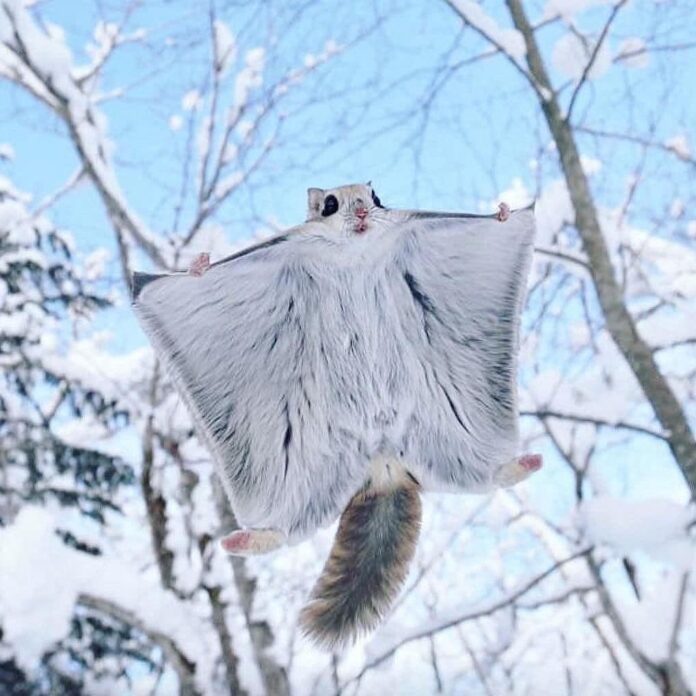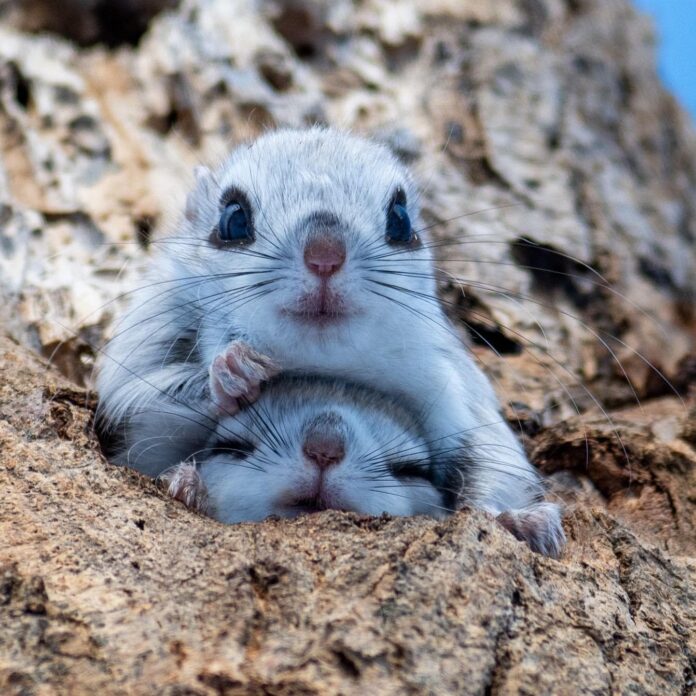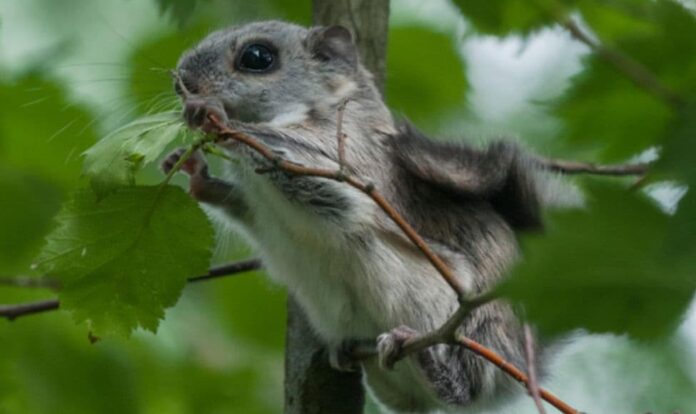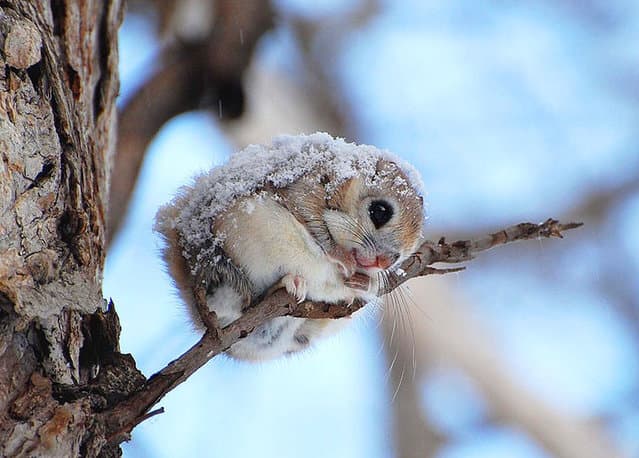Siberian flying squirrel is one striking mammal with cute eyes and a fluffy body that totally melts your heart. One of the most interesting things about them is their membranes which allow them to glide effortlessly from tree to tree. These fluff balls can glide across distances of over a hundred meters which is quite impressive for something so tiny. We will take a look at some of the most interesting facts and features about Siberian flying squirrels below. Let’s see how great these cuties are in the wild.
1Appearance

Looking absolutely adorable, Siberian flying squirrels have a gray coat with a black stripe between the neck and forelimb. The fur coat is thick, and it keeps the squirrels warm on cold winter days. While the color helps them blend in with their surroundings to avoid predators. They have large eyes that are strikingly black, and an overall fluffy face. Females weigh only around 150 grams while the males are slightly smaller.
Just like the name suggests, these tiny fluff balls can fly; but not because of their wings. Siberian flying squirrels are known for their membrane aka patagium, a flap of skin that stretches between their front and rear legs. When they spread this membrane, they can glide from tree to tree across a long distance. It could be up to over a hundred meters for each glide which is quite impressive.
2Behavior

Being nocturnal, Siberian flying squirrels are mostly active late in the evening but females with young may also feed during the day. Unlike most animals, these squirrels don’t hibernate though they do sleep continuously for several days sometimes in winter. Those adorable eyes are not just for show, they have incredible night vision. That way, they can easily go out and look for food at dusk and night.
When dusk falls, they emerge from their dens and quickly climb up the tree trunk to the upper branches. If there is food in stock, they may feed up there. In case there is not, they will glide from tree to tree to look for food.
3Feeding & Habitats

The main diet of these little fluffy squirrels consists of berries, buds, cones, leaves, nuts, seeds, and sprouts. Sometimes, they also feed on bird eggs and nestlings if the opportunity allows. In the time when alder and birch catkins are abundant, they also collect and store them for winter. They use abandoned woodpecker holes or other nooks as storage place so that there is food in winter.
Siberian flying squirrels like old forests with a mix of conifers and deciduous trees where they can easily glide. They also reside in boreal forests and old-spruce-dominated forests but these forests are slowly destroyed. These squirrels usually build their nest in holes made by woodpeckers but they may also nest in birdhouses.
4Predators & Threats
Being a small animal, it is without a doubt that they have quite several predators. Some of the most common predators of the Siberian flying squirrels are harks, martens, owls, wild cats, and wild dogs.
The Siberian flying squirrel is the only flying squirrel species in Europe, and it occurs only in Estonia and Finland. In both countries, they are considered Vulnerable since they were locally extinct in Belarus, Latvia, and Lithuania. The dramatic decline of their population is due to climate change, habitat fragmentation, and habitat loss.
Related Post: Cute Birds You Should See




